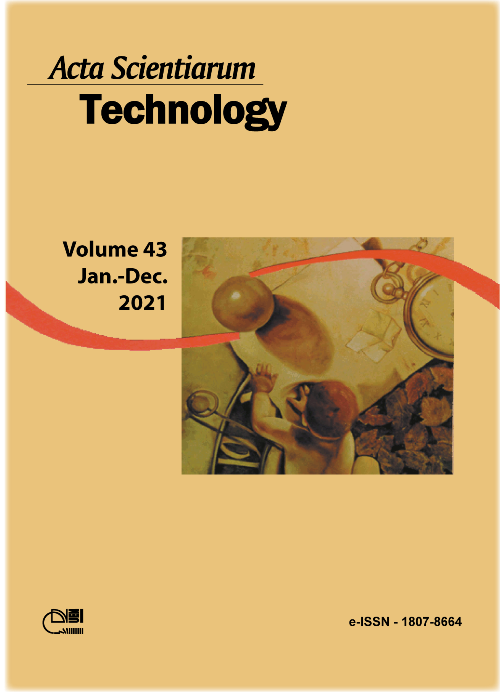Generalized ridge estimators adapted in structural equation models
DOI:
https://doi.org/10.4025/actascitechnol.v43i1.49929Palavras-chave:
structural model; generalized ridge regression; multicollinearity.Resumo
Multicollinearity is detected via regression models, where independent variables are strongly correlated. Since they entail linear relations between observed or latent variables, the structural equation models (SEM) are subject to the multicollinearity effect, whose numerous consequences include the singularity between the inverse matrices used in estimation methods. Given to this behavior, it is natural to understand that the suitability of these estimators to structural equation models show the same features, either in the simulation results that validate the estimators in different multicollinearity degrees, or in their application to real data. Due to the multicollinearity overview arose from the fact that the matrices inversion is impracticable, the usage of numerical procedures demanded by the maximum likelihood methods leads to numerical singularity problems. An alternative could be the use of the Partial Least Squares (PLS) method, however, it is demanded that the observed variables are built by assuming a positive correlation with the latent variable. Thus, theoretically, it is expected that the load signals are positive, however, there are no restrictions to these signals in the algorithms used in the PLS method. This fact implies in corrective areas, such as the observed variables removal or new formulations of the theoretical model. In view of this problem, this paper aimed to propose adaptations of six generalized ridge estimators as alternative methods to estimate SEM parameters. The conclusion is that the evaluated estimators presented the same performance in terms of accuracy, precision while considering the scenarios represented by model without specification error and model with specification error, different levels of multicollinearity and sample sizes.
Downloads
Downloads
Publicado
Como Citar
Edição
Seção
Licença
DECLARAÇíO DE ORIGINALIDADE E DIREITOS AUTORAIS
Declaro que o presente artigo é original, não tendo sido submetido í publicação em qualquer outro periódico nacional ou internacional, quer seja em parte ou em sua totalidade.
Os direitos autorais pertencem exclusivamente aos autores. Os direitos de licenciamento utilizados pelo periódico é a licença Creative Commons Attribution 4.0 (CC BY 4.0): são permitidos o compartilhamento (cópia e distribuição do material em qualqer meio ou formato) e adaptação (remix, transformação e criação de material a partir do conteúdo assim licenciado para quaisquer fins, inclusive comerciais.
Recomenda-se a leitura desse link para maiores informações sobre o tema: fornecimento de créditos e referências de forma correta, entre outros detalhes cruciais para uso adequado do material licenciado.















